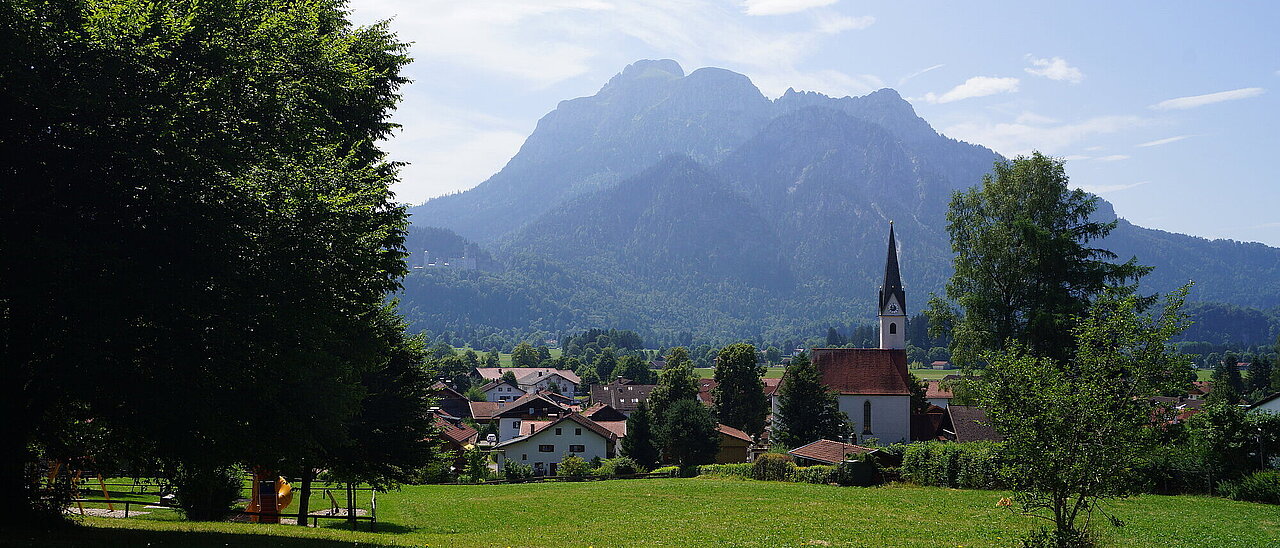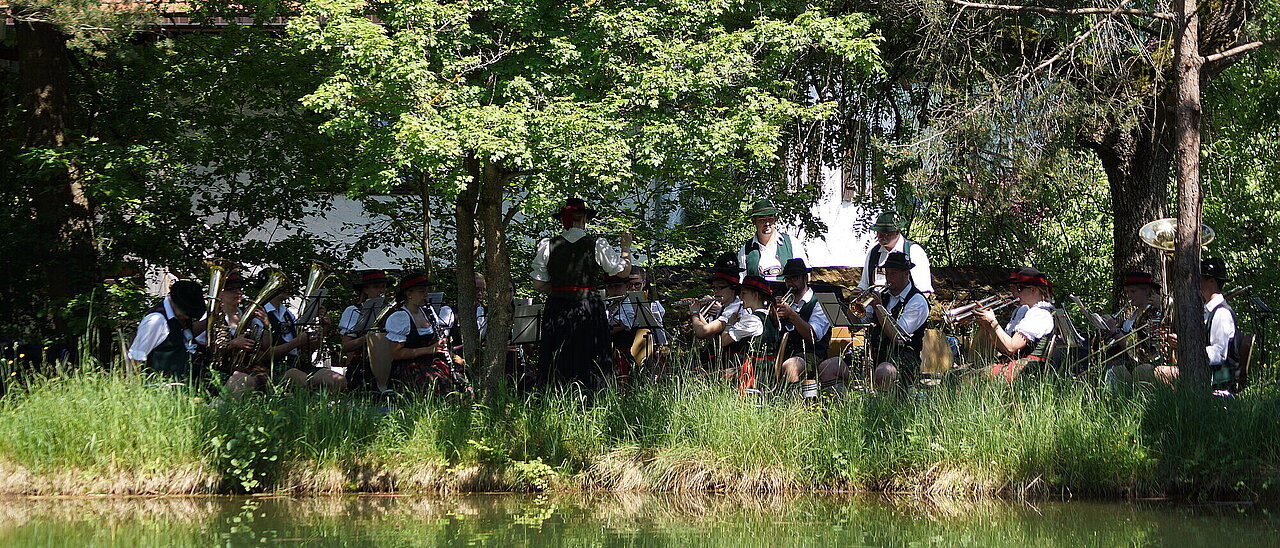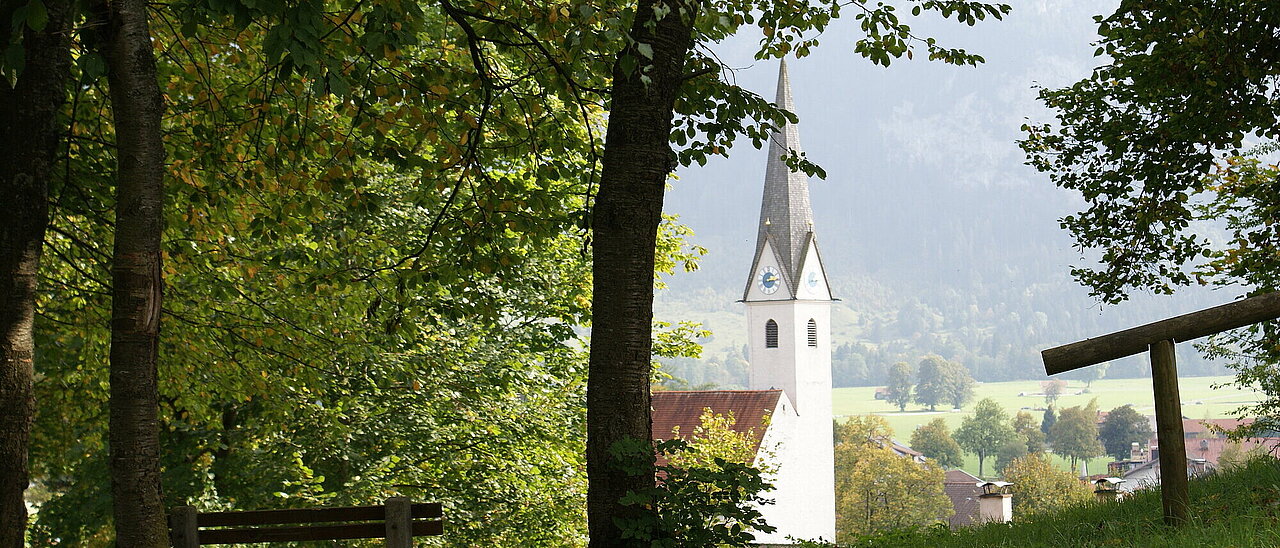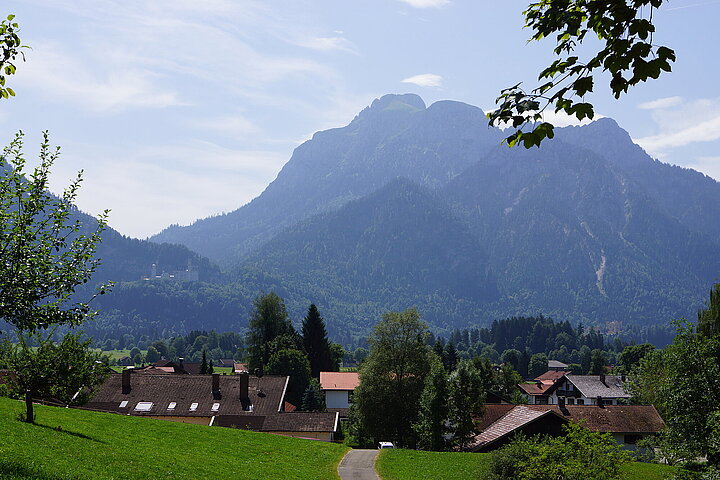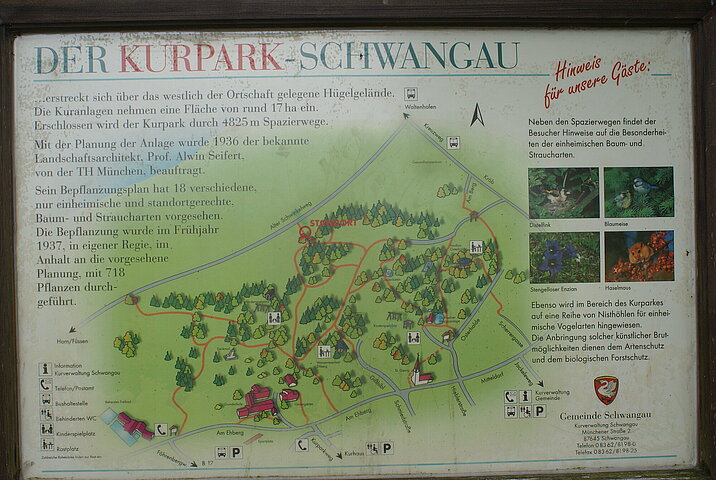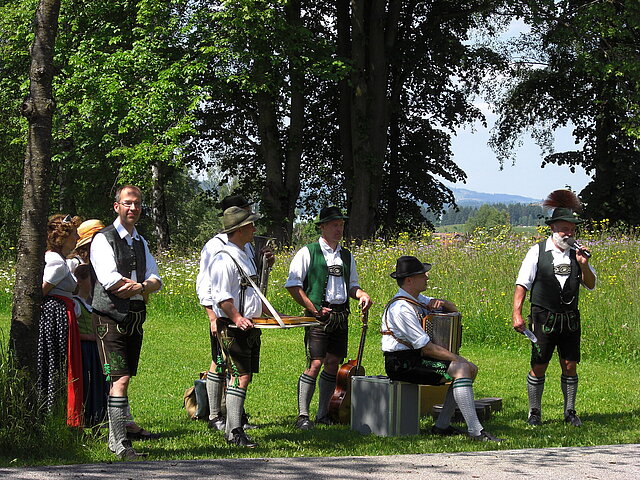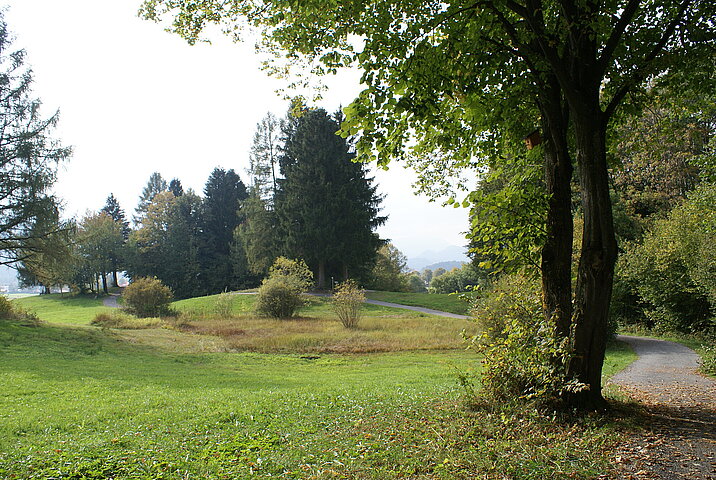- en.schwangau.de
- Sightseeing
- Schwangau's Surroundings
- The Kur park in Schwangau
The Kurpark in Schwangau
A tranquil haven in the idyllic village
The Schwangauer Kurpark in the middle of the town, is considered as a good starting point to appreciate the nature and culture around the village. Tree planting, irregular large meadows and tree-lined paths are the characteristics of the Kurpark.
Flower plants are lacking. But the natural splendor of the flower meadows compensates for this. The powerful, natural growth of local plants doesn't show that they are designed by landscape architects and created by human hands.
Over 75 years of natural vegetation to became a naturally grown mixed forest with large meadows are in between - a peaceful haven right in Schwangau.
Interactive map
Signs explain the Kurpark facilities
The signs at the park entrances explain everything to the visitors. Several roads lead to the park: a few hundred meters from the rehab centre, King Ludwig II, a path branches away to the district of Horn.
The hill starts "Am Berg" from the fountain leading in the royal avenue on the street "Im Kröb" and ends in the Kurpark. From the old village street in Mitteldorf, the "Osterhalde" leads up to the park. Another approach is from the Church of St. George. A path leads from the Church towards the Royal Crystal Thermal pool (both for pedestrinas and cyclists) and just before the Kindergarden of St. Tosso, there's a path towards the park.
Directly next to the Royal Crystal Spa, beside the large car park, a tarmac path leads up to one of the most beautiful viewpoints on the southern edge of the park.
The community acquired land
The entire park area was once used as a Community cattle pasture. To enable as many farmers as possible to have the grazing rights, in 1824 it was divided into around 100 small plots. Even before the First World War, the town was gradually acquiring the small pieces of terrain back from the individual farmers.
In 1936 the council decided, under Schwangau's Mayor, Georg Pfeiffer, to build a Kurpark there. the remaining plots were bought by the municipality and some farmes even donated their land to the community.
Plants from the region, paths and viewpoints
Architect Alwin Seifert, Dozent of horticulture, was inspired by the 100-year-old "English Garden" in the once royal Schwansee park. He laid down a detailed planting plan in December in 1936, which contained more than 700 native trees and shrubs. The expert took into account that the local plants possessed too little growth opportunities due to the harsh climate.
After two years of construction, the Kurpark was officially handed over to the locals and guests. Five kilometers of good, hard path network pass through the approximately 18-hectare park today.
Magnificent bushes and trees form a nature reserve with meandering meadows offering a wide variety of flowers looks down over the village and up to of the royal castles and mountain ranges. To the north, one can admire the splendid view over the vast areas around the Forggensee and the chains of hills that define the "ice age valley" of today's artificial lake.

